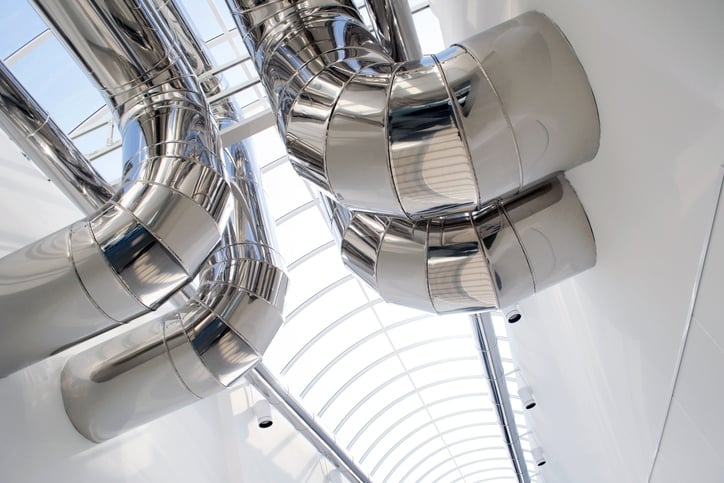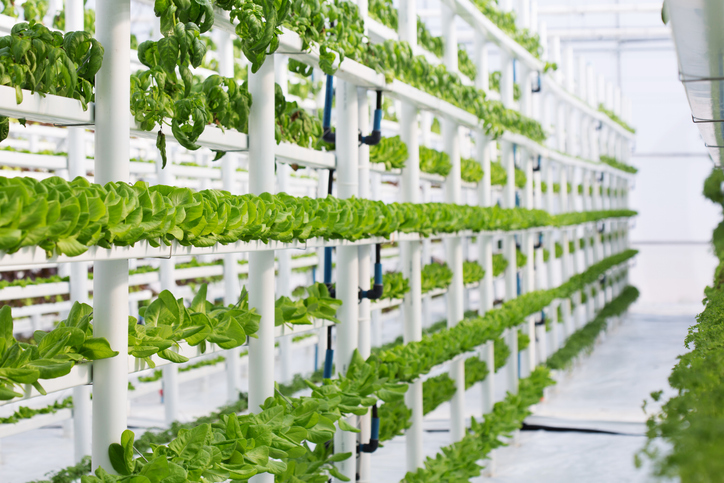Smart Shipping Containers Unleashed: Climate-Controlled Container Design

Medicine.
Perishable foods.
Cosmetics & beauty products.
Advanced technology.
What do these items have in common?
When they're moved from Point A to Point B at any distance, they require traveling in a climate-controlled environment. Subjected to extreme heat or cold – or fluctuations between the two – can create a host of issues for any of these items, from a loss of quality to an outright loss.
Smart shipping containers – and their sensor technology – solve this problem, creating a means to transport items in a micro-environment characterized by stability.
The Basics of Smart Shipping Containers
The story has been the same since the day the first person moved an item that was particularly sensitive to ambient conditions a considerable distance. That someone needed a means of transport that not only protected the item from the normal rigors of travel, but also from external & internal ambient conditions.
The earliest iterations of transporting goods in what would now be considered rudimentary shipping containers required one major thing for managing their internal conditions: constant human attention.
But as technology and engineering evolved, climate-controlled shipping containers brought automation and a continuous management level to their micro-environments, drastically reducing the need for human intervention.
Climate-controlled shipping containers – from those stacked high on the decks of giant freighters to rail cars and tractor-trailers – continue to evolve.
Modern shipping containers with climate controls are a far cry from, say, the refrigerated truck trailer of 30 years ago. With IoT-enabled sensor technology, they've become smart, able to dynamically adjust to changes in temperature, humidity, and airflow, ensuring conditions inside remain stable. Real-time data collection enables remote monitoring and management while the container is en route, adding an extra layer of safety and security for its cargo.
The ‘Must’ Design Considerations for Smart, Climate-Controlled Shipping Containers
Designing a smart, climate-controlled shipping container means working with several key factors in mind, including:
- The type of cargo
- The length of travel time
- The modes of transportation involved
For example, pharmaceuticals often require precise temperature control within a tight range, while perishable foods may need both temperature and humidity regulation and in some cases, more elaborate controlled atmospheres.
Maintaining a shipping container's climate regardless of trip duration goes beyond temperature regulation. Absolutely, that is a key element of climate control. However, when it comes to how to climate control a shipping container, it's about having the right hardware paired with advanced sensor technology.
Shipping Container Hardware
Outside of a durable exterior, your shipping container's design should include:
-
Insulation - High-quality insulation materials like polyurethane foam or fiberglass panels to maintain temperature and prevent heat transfer.
-
HVAC System - Either a refrigeration unit or heater/air conditioner to actively control the internal temperature and humidity.
-
Thermostat/Control System - An electronic control system to monitor and regulate the temperature and humidity levels inside the container.
-
Power Supply - Either an integrated power source such as a diesel generator or the ability to connect to an external power source.
-
Structural Framing - A sturdy steel or aluminum frame to provide structural integrity and allow for stacking/transport.
-
Weatherproofing - Seals, gaskets and coatings to make the container airtight and protect against moisture, dust, and pests.
Shipping Container Sensors
Among the most finite elements of a container's climate control systems, advanced sensor technology can mean the difference between a smart shipping container that does its job vs. one that all but guarantees ruining its contents. A smart shipping container's climate control systems should include the following sensors:
1. Humidity Sensor:
Purpose: Keeping airborne moisture in check is vital for preventing damage from condensation or dryness that can affect a wide range of products, including food, textiles, and electronic components.
Sensor Technology: Capacitive humidity sensors are widely used in shipping containers because they can accurately measure relative humidity (Rh) over a wide range and are resilient to temperature fluctuations or chemical exposure.
Amphenol Sensor Solution: Telaire T9501, Telaire T9602
2. CO2 Sensor:
Purpose: Carbon dioxide sensors are important for containers transporting perishable goods, especially organic products like fruits and vegetables that respire during transport. Monitoring CO2 levels helps manage the respiration rate and quality of these perishables.
Sensor Technology: Nondispersive infrared (NDIR) sensors are commonly used for CO2 detection. These sensors measure the absorption of infrared light as it passes through the air sample, providing precise quantification of CO2 levels.
Amphenol Sensor Solution: Telaire T3030
3. O2 Sensor:
Purpose: On the opposite side of the gas equation, oxygen sensors, controlling oxygen levels is particularly important in reducing spoilage for organic materials (including fruits and vegetables, which produce oxygen) and preventing fire hazards in containers carrying flammable products.
Sensor Technology: Electrochemical cells and zirconia sensors are typical technologies for measuring oxygen levels. These sensors can provide fast, reliable measurements and are capable of functioning over a broad range of oxygen concentrations.
4. Temperature Sensor/Probe:
Purpose: Temperature sensors or probes are essential for measuring the internal temperature of the shipping container, especially when it comes to shipping goods such as pharmaceuticals, perishable food, and electronics.
Technology: Common types of temperature sensors include thermocouples, resistance temperature detectors (RTDs), and digital sensors. These can provide continuous, real-time data, allowing for immediate adjustment.
Amphenol Sensor Solution: Thermometrics JS8746 Harsh Environment Temperature Sensor
The #1 Consideration for Shipping Container Sensor Selection (& How to Meet it)
No matter what your shipping containers are transporting, one factor affects everything during transit: the external environment.
Despite their advanced technology or engineering, the simple fact is shipping containers of any sort are still at the mercy of external conditions – and that extends to your shipping container's sensor technology.
Another reality: transportation is tough on anything you’re shipping and myriad factors can impact your container's exterior (and its contents and components by extension).
These include many of the same factors you're trying to control inside the container:
|
Factor |
Effect |
|
Temperatures |
Extreme temperatures can cause mechanical stresses and potential failure of sensor components and may reduce battery performance and lifespan. |
|
Moisture from Humidity, Condensation, or Direct Contact with Water |
Moisture can corrode metal components and short-circuit electrical connections, and high humidity can affect the accuracy of certain sensors. |
|
Chemical Exposure (such as Saltwater) |
Corrosive chemicals, such as saltwater, can rapidly degrade both the external and internal components of sensors, leading to corrosion of metallic parts and degradation of electronic circuits. |
|
Pests and Other Environmental Factors |
Pests can damage sensors by chewing through cables and housings, while environmental factors like dust and debris can clog mechanisms and impair sensor function. |
Staving Off Degradation by Environmental Conditions
How do you meet the environmental demands shipping container sensors face during travel?
The answer is simple, and it's no different than what it is for sensor technology used in more permanent/stationary applications (think commercial & residential HVAC systems): invest in custom advanced sensor technology.
Envirorments during transit can be extremely volatile, and addressing every "what if" might seem near impossible. Just like the shipping container itself, its integrated sensor technology must be capable of withstanding extreme and unpredictable conditions.
Unlike off-the-shelf solutions, custom advanced sensors for shipping containers are designed specifically to endure the stresses encountered in transit environments. Not only that, but they're tailored to not only function, but operate with uncompromised accuracy in harsh conditions.
Working with an advanced sensor manufacturer, customization extends to selecting materials that resist corrosion and wear, implementing protective encasements that shield delicate components from physical and chemical damage, and enhancing software for dynamic response to sudden environmental changes. What's more, advanced sensors can be integrated with self-diagnostic capabilities that provide alerts for potential issues before they lead to failure, ensuring continuous operation and reliability.
Put simply, advanced sensor technology that's designed for smart shipping containers is an investment that pays dividends each and every trip.
Same Story, Smarter Container
The story for shipping containers and the goods they transport will always be the same: the container needs to provide a high level of protection for its contents across a variety of fronts.
With advanced sensor technology carefully integrated, the shipping containers of today – and tomorrow – will be more equipped than ever to deliver goods in the best condition possible, no matter where they're going or how long it takes them to get there.
Add Custom Sensor Technology to Your Shipping Container Design
Speak with a sensor engineer today:




